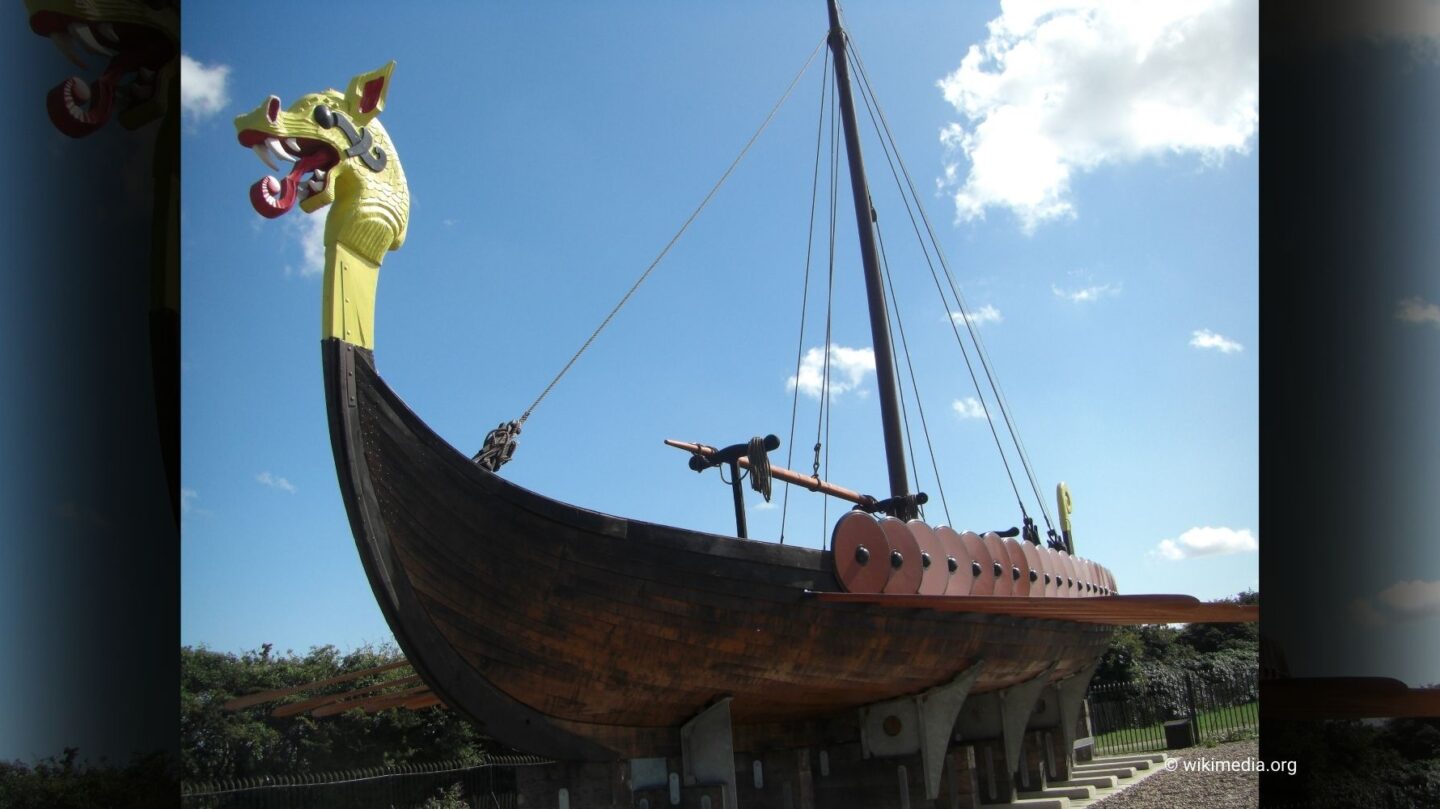Engineering Marvels of the Viking Age
Viking longships were the epitome of engineering excellence during the Viking Age (approximately 800–1100 CE). These iconic vessels were not only crucial for the Vikings’ legendary raids but also served as versatile tools for trade, exploration, and conquest. Their innovative design set them apart from other contemporary ships, making them symbols of Viking dominance on the seas.
The longships were renowned for their speed, agility, and adaptability. Crafted primarily from oak, they were both lightweight and durable, enabling the Vikings to navigate both open seas and shallow rivers. This versatility allowed them to strike quickly and retreat before their enemies could mount a defense.
Key Features of Viking Longships
Several design features made Viking longships exceptional:
- Shallow Draft: The shallow draft of these ships allowed them to sail in waters as shallow as one meter. This enabled the Vikings to venture inland via rivers, surprise their enemies, and raid towns far from the coast.
- Symmetrical Shape: Longships were symmetrical, with identical bows and sterns. This design allowed the ship to reverse direction without turning around, an invaluable feature during raids or battles.
- Flexible Hull: The planks of Viking longships were overlapped using a technique called clinker-building. This created a flexible hull that could withstand the rough waters of the North Atlantic while maintaining speed and stability.
- Rowing and Sailing Capability: Equipped with both oars and a single large sail, longships could navigate regardless of wind conditions. The sail, typically made from wool, provided immense speed when the wind was favorable, while oars ensured mobility in calm or narrow waters.
- Lightweight and Portable: Longships were relatively lightweight, allowing them to be carried overland between rivers or around obstacles—a tactic the Vikings used to outmaneuver their enemies.
Powering Viking Expansion
The longship was instrumental in the Vikings’ ability to expand their influence across Europe and beyond. These vessels allowed them to raid coastal settlements from England to the Mediterranean and even as far as North Africa. They also enabled trade routes that stretched from Scandinavia to the Byzantine Empire and the Middle East.
Exploration was another key aspect of Viking seafaring. Longships carried Vikings to uncharted territories, including Iceland, Greenland, and even North America. Leif Erikson’s voyage to Vinland (modern-day Newfoundland) around 1000 CE, centuries before Columbus, was made possible by the capabilities of these ships.
Warfare and Tactical Superiority
In battle, Viking longships provided a significant tactical advantage. Their speed and maneuverability allowed for swift and devastating raids. The sight of a fleet of longships appearing on the horizon struck fear into the hearts of coastal communities.
During naval engagements, longships could easily outflank slower, less agile enemy vessels. Vikings often used boarding tactics, relying on their ships’ design to quickly close in on enemy ships. Their ability to land on virtually any shoreline added an element of unpredictability to their attacks.
Cultural and Symbolic Significance
Beyond their practical uses, longships held deep cultural significance for the Vikings. They were symbols of status and power, often elaborately decorated with carvings of dragons or other mythical creatures. These designs were intended to intimidate enemies and invoke the protection of the gods.
Longships also played a role in Viking funerary traditions. High-ranking individuals were sometimes buried in ships, symbolizing their journey to the afterlife. The Oseberg ship burial in Norway is one of the most famous examples, providing invaluable insights into Viking craftsmanship and culture.
Legacy of the Longship
The Viking longship remains one of history’s most remarkable maritime innovations. Its design influenced shipbuilding for centuries and set the standard for mobility and versatility on the seas. The legacy of these vessels lives on in modern nautical engineering and continues to captivate historians and enthusiasts alike.
The longship was more than just a vessel; it was a tool of exploration, conquest, and cultural identity. Its secrets reveal not only the ingenuity of the Vikings but also the vast scope of their influence across the medieval world.
